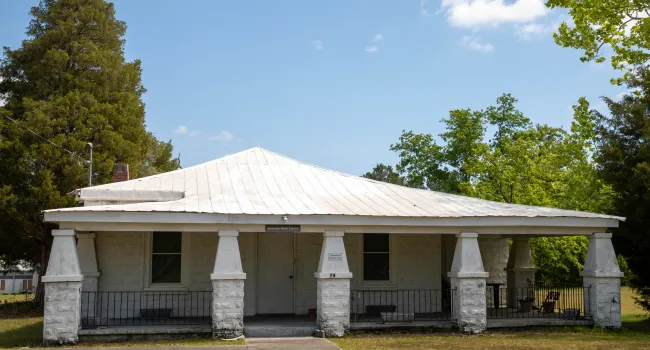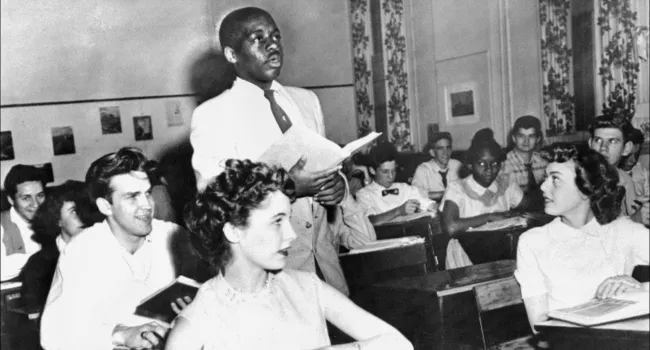Established in Trenton (Edgefield County) in 1881 by the Reverend Alexander Bettis, this school provided former enslaved African Americans and their children with a basic education of reading and writing as well as skills and trades. A former slave who could neither write nor read, Bettis organized the Mt. Canaan Missionary and Educational Union to raise the $300 used in purchasing the land for the boarding school. While there was an emphasis on teacher education, the school’s primary focus was on industrial training.
At a time when the state neglected the education of African Americans, Bettis Academy offered educational opportunities when few professions were open to blacks. Consisting of fourteen buildings, the school was accredited by the state as a junior college in 1933. This course of study allowed graduates to teach in South Carolina’s elementary schools or enter four-year colleges as juniors.
Beginning in 1940 the school was overseen by interested northerners, such as Clement Biddle and Alice Angell, who obtained a grant from the General Education Board, a philanthropic organization established by John D. Rockefeller in 1903. Funds were used to construct a seven-room home-economics building and to purchase farm equipment and vehicles.
Bettis closed in 1952 when South Carolina began improving statewide public education for Black citizens. In 1998 Bettis Academy and Junior College was listed in the National Register of Historic Places.
Click play to view the tour on your device
Standards
- 5.4.CC Analyze the continuities and changes of race relations in the United States and South Carolina following the Supreme Court decisions of Briggs v. Elliott and Brown v. Board of Education.
- 8.5.CX Analyze the correlation between the Modern Civil Rights Movement in South Carolina and the U.S.
- This indicator was designed to foster inquiry into the role of South Carolina in the Modern Civil Rights Movement, to include the influence of court cases such as Briggs v. Elliot and Flemming v. South Carolina Electric and Gas. This indicator was also developed to promote inquiry into the relationship between national leadership, protests, and events and South Carolina leadership, protests and events, such as the Friendship Nine and the Orangeburg Massacre.
- 8.5.E Utilize a variety of primary and secondary sources to analyze multiple perspectives on the cultural changes in South Carolina and the U.S.
- USHC.5.CC Evaluate continuities and changes during the Civil Rights Movement and other subsequent movements for equal rights.
- This indicator was developed to promote inquiry into thematic continuities and changes into how marginalized groups sought and won legal rights. Inquiry into the leadership, methods, and outcomes of modern equal rights movements are supported by this indicator.
Resources
You need to be logged in to listen to view this content. Create an account now; it's quick, easy, and free!
Log In to View




















